TABLE 17-9
What are the factors that determine the acceleration time (in sec.)from 0 to 60 miles per hour of a car? Data on the following variables for 171 different vehicle models were collected:
Accel Time: Acceleration time in sec.
Cargo Vol: Cargo volume in cu.ft.
HP: Horsepower
MPG: Miles per gallon
SUV: 1 if the vehicle model is an SUV with Coupe as the base when SUV and Sedan are both 0
Sedan: 1 if the vehicle model is a sedan with Coupe as the base when SUV and Sedan are both 0
The regression results using acceleration time as the dependent variable and the remaining variables as the independent variables are presented below. 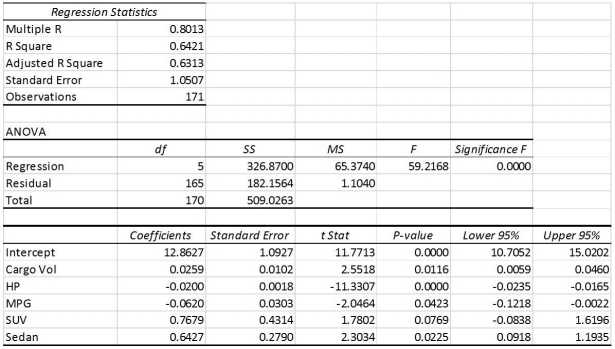 The various residual plots are as shown below.
The various residual plots are as shown below. 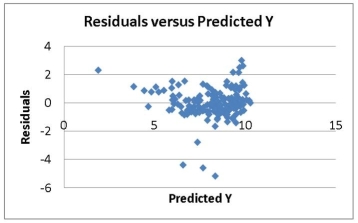
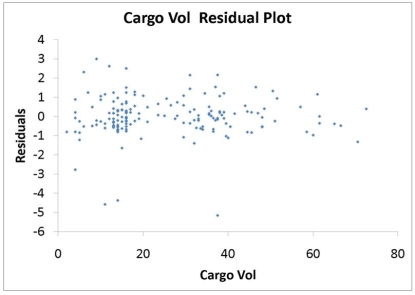
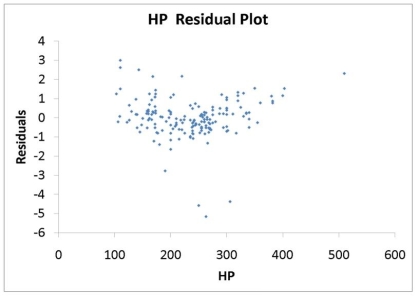
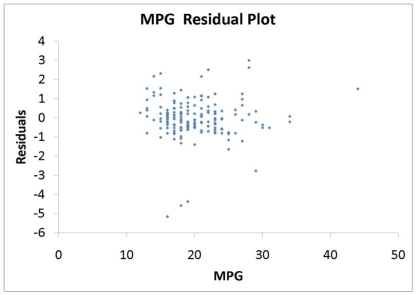
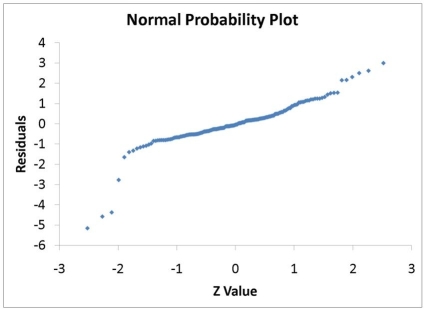 The coefficient of partial determination (
The coefficient of partial determination (  )of each of the 5 predictors are,respectively,0.0380,0.4376,0.0248,0.0188,and 0.0312.
)of each of the 5 predictors are,respectively,0.0380,0.4376,0.0248,0.0188,and 0.0312.
The coefficient of multiple determination for the regression model using each of the 5 variables Xj as the dependent variable and all other X variables as independent variables (  )are,respectively,0.7461,0.5676,0.6764,0.8582,0.6632.
)are,respectively,0.7461,0.5676,0.6764,0.8582,0.6632.
-True or False: Referring to Table 17-9,there is enough evidence to conclude that MPG makes a significant contribution to the regression model in the presence of the other independent variables at a 5% level of significance.
Definitions:
Leader-follower Relationships
The dynamic interactions and connections between those in leadership positions and their followers, emphasizing mutual respect, influence, and achievement of common goals.
LMX
Leader-Member Exchange theory, which focuses on the two-way (dyadic) relationship between leaders and individual followers, emphasizing the importance of these relationships on work outcomes.
Non-profit Organization
An entity that operates for purposes other than making profit, often focused on furthering a social cause or shared goal.
Lead Volunteer Role
A position held by an individual in a voluntary organization who guides and supports other volunteers, often taking on responsibilities similar to those of a managerial role in a corporate setting.
Q10: An employer who employs a person-living-with-AIDS<br>A)has to
Q65: Referring to Table 16-7,the forecast for the
Q66: A buyer for a manufacturing plant suspects
Q74: Referring to Table 16-2,set up a scatter
Q165: Referring to Table 17-9,_ of the variation
Q172: Referring to Table 17-5,the standard error of
Q186: Referring to Table 17-10,Model 1,which of the
Q254: Referring to Table 14-3,to test whether aggregate
Q275: Data on the amount of time spent
Q289: Referring to Table 17-12,what is the estimated